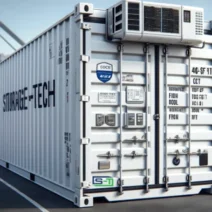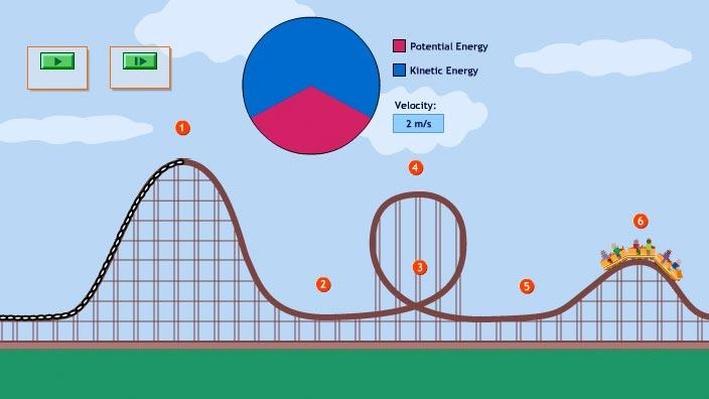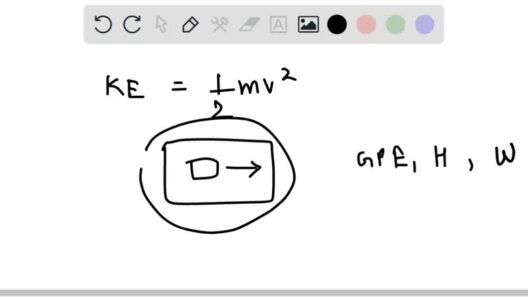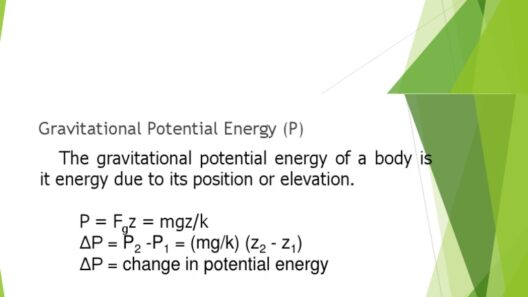Roller coasters are a quintessential embodiment of thrill and exhilaration, capturing the hearts of millions of amusement park enthusiasts each year. Beneath the surface of these adrenaline-pumping attractions lies a captivating interplay of physics principles, particularly the conservation of energy. Understanding how energy is conserved during a roller coaster ride not only demystifies the experience but also highlights essential concepts in physics that govern motion and forces.
To appreciate the conservation of energy on a roller coaster, it is essential to first understand the core principles of energy itself. Energy can be defined as the capacity to perform work, and it exists in various forms, primarily potential energy and kinetic energy. Potential energy is stored energy that depends on the position of an object, often related to its height above the ground. Conversely, kinetic energy is the energy of motion, determined by an object’s mass and velocity.
At the very starting point of a roller coaster ride, the cars are elevated to a significant height, typically by a chain lift. At this apex, the train possesses maximum potential energy. According to the law of conservation of energy, energy within a closed system cannot be created or destroyed; it can only be transformed from one form to another. Thus, as the roller coaster descends from this height, the stored potential energy converts into kinetic energy as the cars accelerate downwards.
The interplay between potential and kinetic energy creates the roller coaster’s exhilarating sequence of hills, loops, and turns. As the train moves upward, it slows down, and potential energy increases while kinetic energy decreases. As it rushes down, kinetic energy surges due to the increase in velocity. This cyclical transformation continues throughout the ride, leading to thrilling drops and rapid accelerations. If we neglect external factors, such as friction and air resistance, the sum of potential and kinetic energy at any given point remains constant.
However, in the real world, no system is completely isolated. Roller coasters experience losses due to friction between the train wheels and the track, as well as air resistance that acts against the motion of the cars. As a result, some energy is lost to the surrounding environment, manifesting as heat. Thus, while energy is conserved in an ideal scenario, real roller coasters operate within a framework that requires additional energy input to maintain the ride’s intensity, necessitating a careful design balance to keep the thrill alive despite these losses.
To dive deeper into this energy conservation mechanism, one can explore the different types of roller coasters built and how they utilize physics principles maximally. There are several typical configurations: wooden coasters, steel coasters, and launched coasters, each employing distinct engineering eras and physical principles.
Wooden roller coasters evoke a sense of nostalgia and are designed with traditional physics in mind. Their reliance on gravity and friction is pronounced; the structure and shape allow them to glide smoothly with minimal technological interference. The seats in a wooden coaster provide an immersive experience, often accentuating the feeling of speed and abrupt changes in velocity while adhering closely to the laws of conservation of energy.
In contrast, steel roller coasters have revolutionized the industry. The flexibility and durability of steel enable designers to create elaborate loops and inversions, resulting in an entirely different ride experience. The design of steel coasters allows for a more intricate application of the conservation of energy principles, enabling riders to traverse through breathtaking spirals and sudden drops while experiencing changes in both potential and kinetic energy. More advanced engineering designs can even maximize the energy conversion processes, pushing the limits of gravity and giving the riders a sense of weightlessness during certain portions of the ride.
Launched roller coasters represent another fascinating evolution in the use of energy. Unlike traditional coasters that rely on gravity to gain initial speed, launched roller coasters utilize mechanisms such as magnetic propulsion or hydraulic systems to achieve rapid acceleration. This results in an immediate transformation of energy forms, allowing riders to experience thrilling speeds that may not have been possible using gravity alone. The physics involved in these launches adds a layer of complexity to energy conservation, where the energy imparted during the launch helps facilitate the ride’s demands and ambitions.
Examining the engineering intricacies of roller coasters reveals much about safety measures too. Safety harnesses, emergency brakes, and sensors are critical components that ensure the ride adheres to safety regulations, while still maintaining the engaging thrill. These systems account for potential energy transformations and mechanical failure points that could threaten the rider’s safety. Therefore, understanding energy conservation also encompasses a holistic approach to amusement park engineering and design.
In summary, roller coasters are much more than simple rides; they represent elaborate mechanisms that embody principles of energy conservation. Through an ongoing interchange of potential and kinetic energy, these structures deliver euphoric experiences rooted in physics. By considering the different designs and the impact of energy dissipation, one can appreciate the complexity and elegance behind each thrilling plunge and exhilarating twist. The wonder of roller coasters serves as not only entertainment but as a testament to how physics governs the experiences we often take for granted. As we enjoy these feats of engineering, let us also recognize the intricate natural laws that underpin the ride, ensuring a future of thrilling adventures while adhering to the principles of physics.








